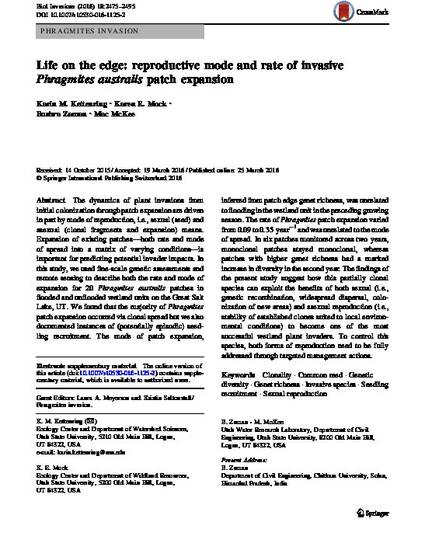
Article
Life on the edge: reproductive mode and rate of invasive Phragmites australis patch expansion
Biological Invasions
(2016)
Abstract
The dynamics of plant invasions from initial colonization through patch expansion are driven in part by mode of reproduction, i.e., sexual (seed) and asexual (clonal fragments and expansion) means. Expansion of existing patches—both rate and mode of spread into a matrix of varying conditions—is important for predicting potential invader impacts. In this study, we used fine-scale genetic assessments and remote sensing to describe both the rate and mode of expansion for 20 Phragmites australis patches in flooded and unflooded wetland units on the Great Salt Lake, UT. We found that the majority of Phragmites patch expansion occurred via clonal spread but we also documented instances of (potentially episodic) seedling recruitment. The mode of patch expansion, inferred from patch edge genet richness, was unrelated to flooding in the wetland unit in the preceding growing season. The rate of Phragmites patch expansion varied from 0.09 to 0.35 year−1 and was unrelated to the mode of spread. In six patches monitored across two years, monoclonal patches stayed monoclonal, whereas patches with higher genet richness had a marked increase in diversity in the second year.
Disciplines
Publication Date
2016
DOI
https://doi.org/10.1007/s10530-016-1125-2
Citation Information
Karen E. Mock. "Life on the edge: reproductive mode and rate of invasive Phragmites australis patch expansion" Biological Invasions Vol. 18 Iss. 9 (2016) p. 2475 - 2495 Available at: http://works.bepress.com/karen_mock/103/
